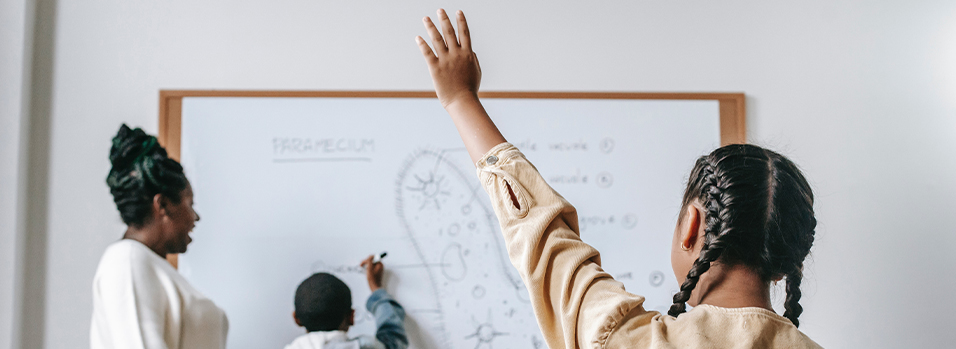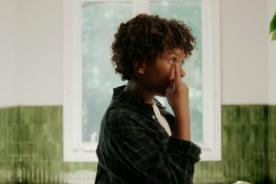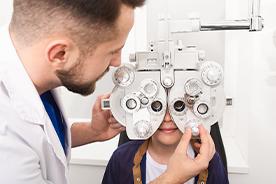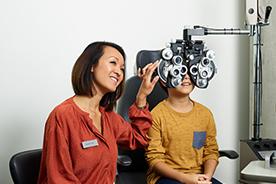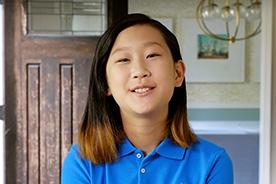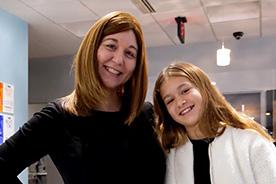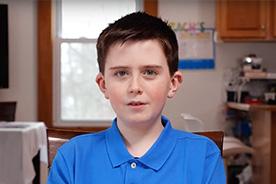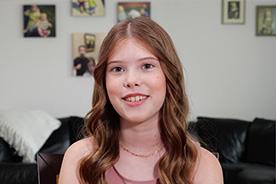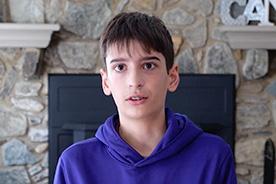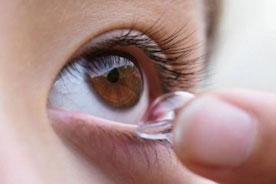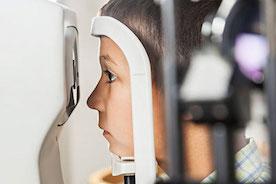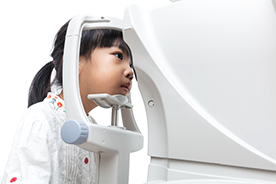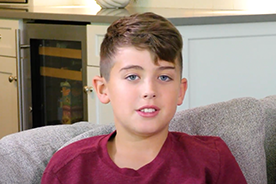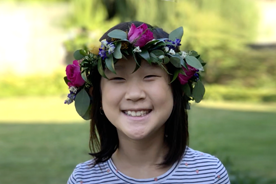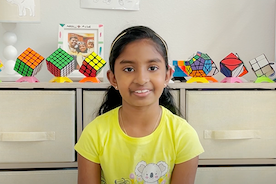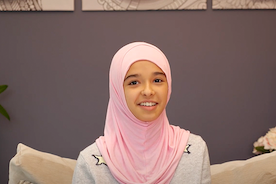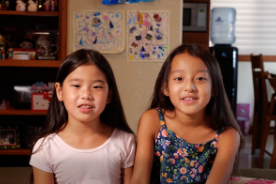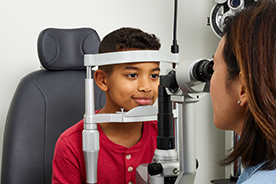Myopia, also known as nearsightedness, is a condition that makes it difficult to see things clearly in the distance. Myopic eyes can see close-up more easily, so if your child has been squinting to see things farther away, it could be due to myopia.
Myopia occurs when the eye is growing faster than it should and longer than it should. When that happens, the eye becomes weaker, leading to possible eye health problems that may affect vision later in life.1
For clear vision, light must focus directly on the tissue that lines the back of the eye, called the retina. Since the eye is longer with myopia, light instead focuses in front of the retina, which causes a blurry image when viewing objects in the distance. This is similar to when a camera is out of focus.
Meanwhile, hyperopia, also known as farsightedness, is the opposite of nearsightedness. Farsightedness is when you can see distant objects more clearly, but closeup objects may be blurry.2 This is due to the eye being shorter, which means the light coming into the eye is directed to a focal point behind the eye, resulting in blurry vision.3
Symptoms of eyesight problems in children
Some nearsightedness symptoms are the same for farsightedness, like eye strain, fatigue, and/or headaches (after periods of close work like using a tablet or sitting closer to a computer screen). Others are unique to farsightedness or nearsightedness.
Many young children have no signs or symptoms of poor vision, so you don’t want to solely rely on them to notice and report concerns to you. There are some potential signs that your child may be having challenges with their vision, as described below, even if they don't realize it. That’s why following a recommended comprehensive eye exam schedule is very important.
Signs your child is farsighted (hyperopic)
Farsightedness is a refractive error that can impact focusing during near activities and can lead to symptoms like blurred vision, tired eyes, or headaches. Symptoms unique to farsightedness include difficulty concentrating and maintaining a clear focus on near objects, aching eyes, double vision, and irritability or nervousness after sustained concentration.3 Overall, the degree of your farsightedness influences how much focusing your vision system needs to perform. People with severe farsightedness, for example, may be able to see distant objects clearly, while those with mild farsightedness may be able to clearly see objects at all distances.2
Signs your child is nearsighted (myopic)
Common signs and symptoms of vision problems, specifically nearsightedness, include complaints of blurry vision, squinting to try to see better, frequent eye rubbing and frequent headaches.4 Children may also hold objects very close, sit very close to the TV or cover one eye.5 They may also hold books, toys, or other objects closer to their face than usual, and blink a lot.6
You can see how your child’s vision without glasses or contact lenses changes with increasing levels of nearsightedness here using CooperVision’s myopia simulator.
Which is more common: Nearsightedness or farsightedness?
Many parents ask, “Is nearsightedness or farsightedness more common?”
Nearsightedness and farsightedness are two of the most common eye conditions in children.
Nearsightedness often begins between ages 6 and 14 and affects an estimated 44% of school-aged children.4
As for farsightedness, children’s eyes haven’t fully developed, so some farsightedness is normal in childhood. Most kids don’t experience blurry vision, though, because their eyes automatically focus. As they grow, they usually become less farsighted and may become nearsighted instead.4
Can my child be both nearsighted and farsighted?
It’s possible that a child can be both nearsighted and farsighted, but not likely, notes Dr. Justin Kwan, OD, FAAO, CooperVision Senior Manager of Myopia Management.
“They can, but not in the same eye. It’s rare, but there’s times when a child is nearsighted in one eye and farsighted in the other,” Kwan says. “That’s probably less than 1% of all children and adults. There’s nothing uniquely different for these children, but the most common symptom would be trouble focusing or turning their head one way.”
How to prevent progressive worsening
There’s no treatment to prevent hyperopia (farsightedness) from getting worse, but unlike nearsightedness—where the eye continues to grow longer—farsighted eyes don’t get shorter. That makes farsightedness more or less stable until the eye grows at a rate which can cause the degree of farsightedness to lessen – the ideal scenario.
For myopia (nearsightedness), which often gets worse, children can be treated with a device—like MiSight® 1 day soft contact lenses (for age-appropriate children*) or orthokeratology which uses special contact lenses to shape the eye. Treating and correcting a child’s vision early is important as it can help curb their vision from worsening over time. While glasses can correct your child's vision now, they may not slow their vision from continuing to get worse. MiSight® 1 day is the first and only†* dual-purpose contact lens to both correct vision‡ and help control myopia from getting worse. §7
To find a MiSight® certified eye care professional and learn about free trials and rebates offered, click the links here.

